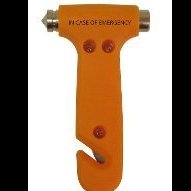Electrical Vocabulary In Thai
-
Recently Browsing 0 members
- No registered users viewing this page.
-
Topics
-
-
Popular Contributors
-
-
Latest posts...
-
25
Crime Indian Tourist Robbed by Two Transgender Women in Pattaya Hotel Room
He recounted how he hired two transwomen near Pattaya Beach and took them to his hotel room on Soi Pattaya 10 Surely, you do not expect us to believe that his hiring of the two transgender prostitutes was for anything other than a carnal event? -
156
Greta Thunberg’s Gaza Aid Voyage Sparks Controversy After Senator’s Mocking Remark
Figures London-based ‘Hamas operative’ behind Greta Thunberg’s Gaza flotilla Zaher Birawi is ‘founding member’ of group that organised aid boat boarded and seized by Israeli forces on Sunday https://www.telegraph.co.uk/news/2025/06/09/zaher-birawi-hamas-operative-greta-thunbergs-gaza-flotilla/ https://www.timesofisrael.com/liveblog_entry/katz-detained-flotilla-activists-refused-to-watch-film-of-hamas-atrocities-on-oct-7/ -
6
RFK Jr.: HHS Moves to Restore Public Trust in Vaccines
No matter who you put on which committee, a large part of the population has lost trust — and it’s probably not coming back. -
59
Would you ever hit a woman?
Why does everyone not just walk away when they are getting robbed or raped? Someone should tell all the women and girls that get raped to just walk away. -
16
Pride Flags Removed from House of Lords Canteen After Peer’s Complaint
Up to him. No-one else's business, as long as it's legal. Live and let live. -
3
Report Bangkok to Cambodia Bus Services Halted Amidst Border Tensions
Well since they were lining up tanks, mobilizing an additional army group and generally massing troops on the border, then yeah, i suppose might as well cancel the bus service. Unless of course all that military hardware on show was the Generals getting all excited about showing off their toys
-
-
Popular in The Pub







.thumb.jpeg.d2d19a66404642fd9ff62d6262fd153e.jpeg)

.thumb.png.59631667ecf82c97db947523760c9cdd.png)
.thumb.png.36058e1d09cc7d50c1386cdac2a56c53.png)


Recommended Posts
Create an account or sign in to comment
You need to be a member in order to leave a comment
Create an account
Sign up for a new account in our community. It's easy!
Register a new accountSign in
Already have an account? Sign in here.
Sign In Now